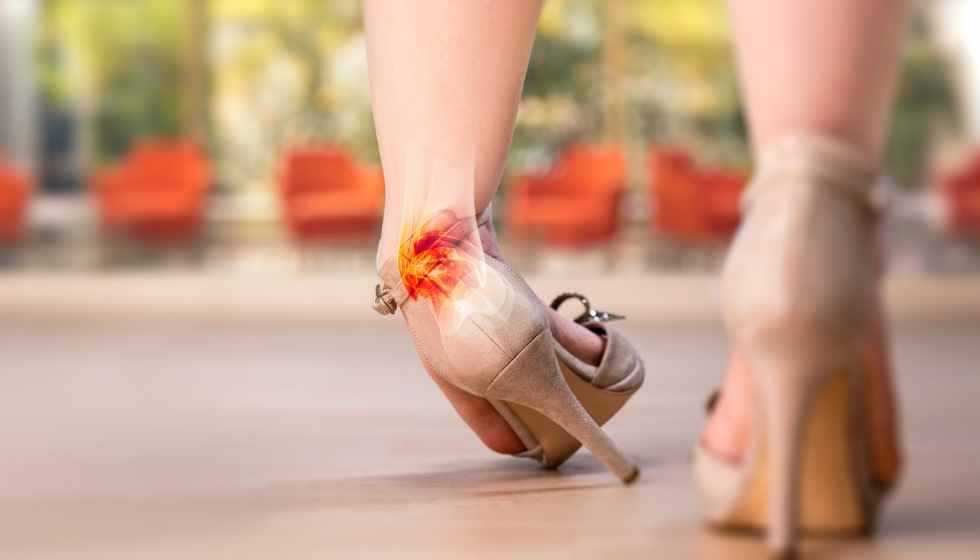The body is made to move, and the muscles are responsible for this action through contracting, stretching, and flexing, which allows the joints to rotate. Muscles are connected on each side of the joint and to the bone by tough cords of connective tissue called tendons.
An injury occurs when the muscle-tendon unit is stretched or torn. The most common reason is overuse and stretching.
The components of the joint work together to facilitate balanced movement and prevent injury. Ligaments help strengthen and stabilize joints.
These ligaments allow the joint to move only in specific directions. If a ligament is stretched or torn, a so-called sprain injury occurs. An ankle sprain is the most common injury.
Causes of the Sprain
Sprains are usually caused by sudden or unusual movements that are not projected. These injuries are sometimes caused individually by a movement or by repeated movements that cause continuous joint stress.
Characteristic Symptoms of Sprains and Strains
The first symptom of a sprain or strain injury is pain. Other common symptoms include swelling and spasms, lasting from minutes to several hours after injury.
Pain is always a symptom that indicates something is not working as it should and is the brain’s warning message to a muscle or joint that must protect to prevent further damage. In work, exercise, or sports, the pain may occur after a specific incident or progress gradually after many repetitions of a movement.
Swelling usually occurs at the injury site, but it can take minutes to hours to notice. Bleeding (such as bruising on the skin’s surface) may take a while to appear. Due to pain and swelling, the body begins to favor the injured part, which can cause the muscles surrounding the area to contract, causing spasms.
Treatment of Sprains
A minor sprain does not usually require medical treatment and the injury recovers without sequelae. However, the affected region must be kept at rest and immobilized, in addition to applying ice packs. Doctors may prescribe pain or anti-inflammatory medications (such as acetaminophen and ibuprofen).
In cases of serious injury, they may need surgery to restore movement to the torn muscles or tendons so they can function and do their jobs normally.
Resting the injury site is essential to further the recovery process, and at this point, using canes or crutches in the event of a sprained ankle or knee can help stabilize the joint. In addition, various removable splints and tensioners can be used to protect the injured area from further damage and movement.
Rest also helps relieve some of the muscle spasms associated with the injury. Sometimes, the doctor may use a non-removable fiberglass cast or splint, especially if the injury is severe.
The purpose of treatment for ankle, knee, or other sprains is to restore the person’s pre-injury function. This means that the injury is expected to be completely healed. The period for recovery depends on the severity of the injury.
A minor ankle sprain can take a few days, or a surgically reconstructed knee sprain can take months to heal (as players sometimes do).
Perhaps the most important treatment for all injuries is rehabilitation. It is an exercise program developed by a professional that, in some cases, can be followed at home or under the supervision of a physiotherapist in a specialized center.
Is it Possible to Prevent Sprains and Strains?
Sprains and strains are caused by accidents, which makes them somewhat difficult to avoid, as no one intends to do any harm in advance, but some practices can help prevent injuries.
Muscles need to be warmed up and stretched before exercise. A warm-up and stretching program helps minimize the risk of injury, even for simple tasks. Also, you should wear shoes that are suitable for playing sports.
Sprains at Home
1. Ice, Compression, Lift, and Rest
It is the best treatment you can do. Applying ice for 15 minutes 4 times a day will help reduce swelling. Raising the foot (if an ankle is sprained) above the heart level allows blood to not pool in the injury, and gravity works against swelling. Compression with an elastic bandage or tensor helps reduce fluid buildup in the area and at rest. Do as few movements as possible that force your muscles to work in this area, and avoid putting your weight on it.
2. Contrast Baths
The contrast bath is a physiotherapeutic technique that alternates hot and cold to help improve circulation in the area and reduce inflammation.
- Two containers are needed where the entire injury site can fit. Then Put the hot water in one container and the cold or iced water in another.
- Soak the lesion to be treated in hot water for 3 to 5 minutes.
- Then, without resting, submerge the lesion in cold water again for a maximum of 1 to 2 minutes.
- This treatment can be done up to 4 times a day. Contrast baths are not indicated in cases of skin sores or when the individual has a blood circulation disease or varicose veins.
3. Water With Salt and Vinegar
Taking local baths with hot water, salt, and vinegar is a great remedy for sprains. Add a cup of vinegar and a handful of salt to a bowl of hot water, soak the area of the injury and leave it submerged until the water cools. Do it twice a day.
4. Cayenne Pepper
Cayenne pepper is rich in capsaicin, which is known to relieve pain. Soak the injured area in hot water and chili powder to produce a soothing effect to help relieve pain.


